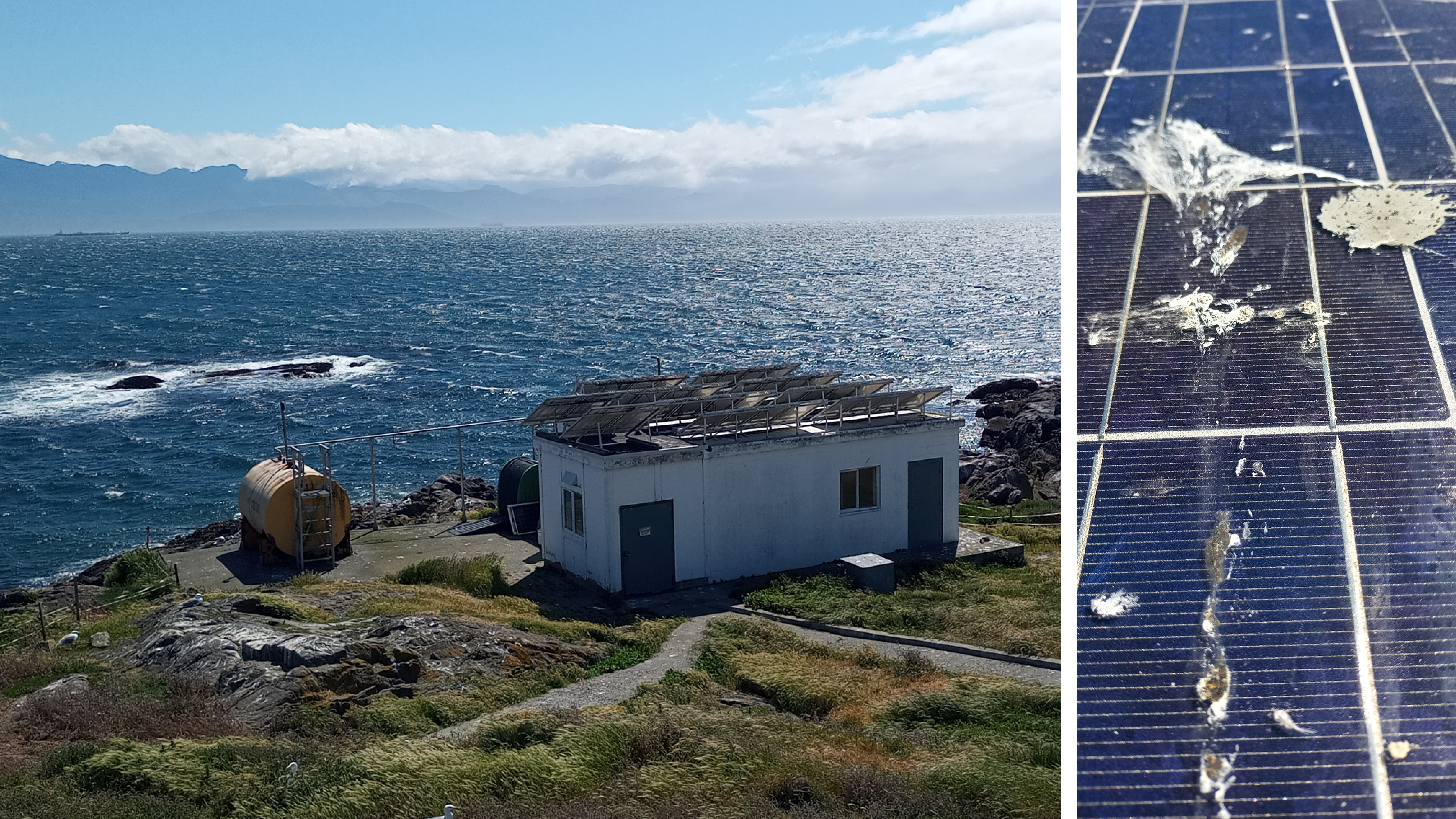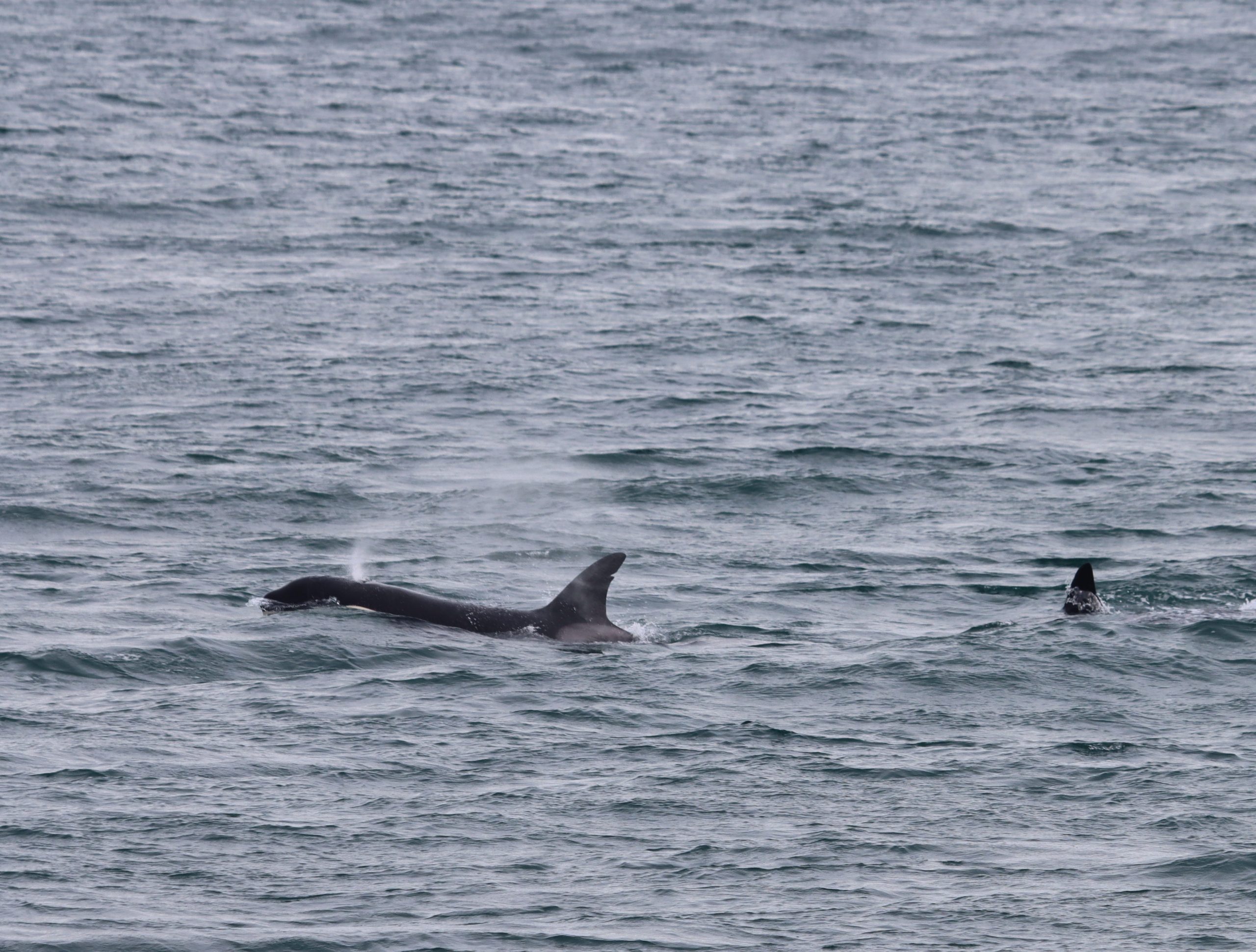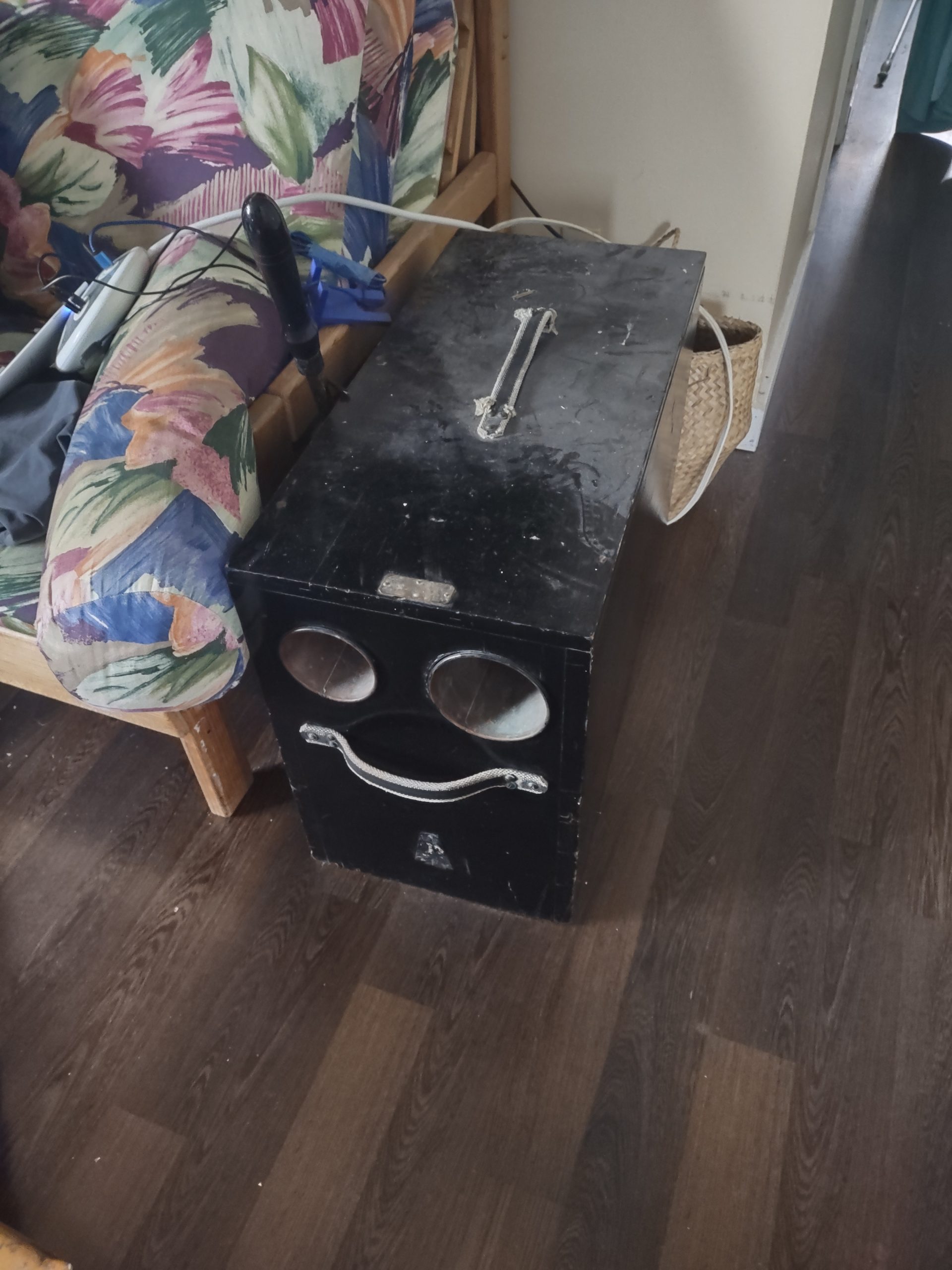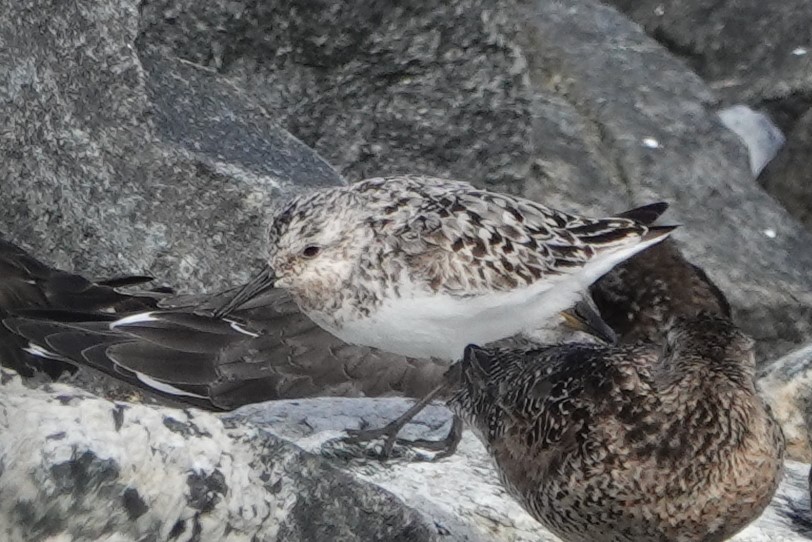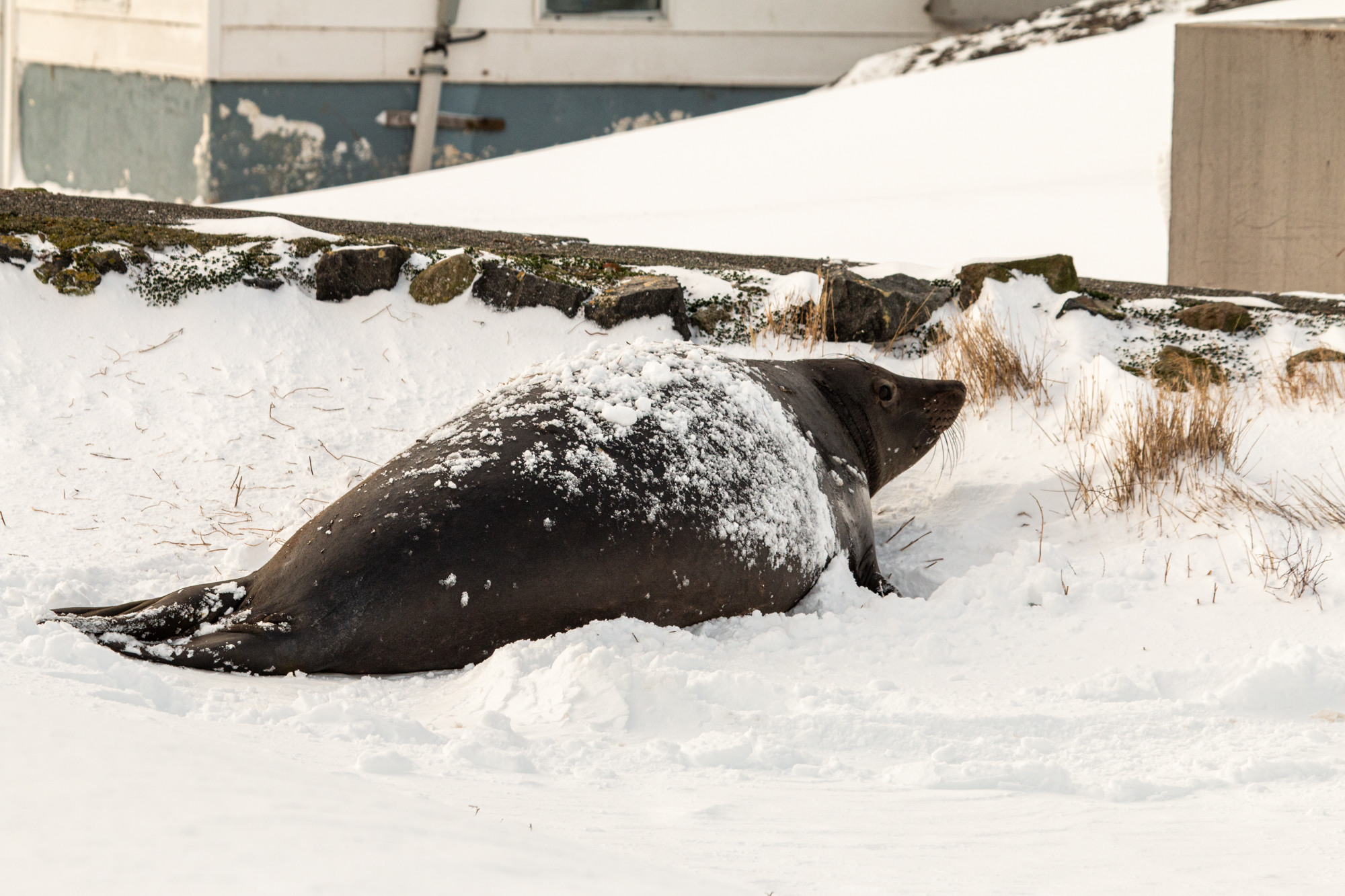Just two months ago, my arrival was met with uncountable numbers of flies and hundreds of Glaucous-winged Gulls building and tending to their nests, many with eggs. While there are still a few nests, most of the gulls are now divided into territories with adults and associated young. It seems to me that there are fewer pairs here now than there were in June, and considerably fewer than there were a year ago at this time. The census on Wednesday should tell an interesting story.
Overall, my impression is fewer gulls, fewer guillemots, fewer mammals (no elephant seals) and many, many fewer flies than the last two Augusts. Fewer gulls means bigger territories, less bickering and fewer mortalities. I have been here two full days and have only seen one dead young gull. This contrasts sharply from the last two summers when there were many remains in the colony — a perfectly normal state of affairs. Perhaps lower productivity has meant an increase in chick survival this year.

Young Glaucous-winged Gulls enjoying some sunshine
The Western Gull I mentioned in an earlier post has produced three young. The adult pair consists of the Western and an “Olympic” gull. Olympic Gulls are a blend of Western and Glaucous-winged Gulls. I believe the Western of this pair is the female, but since both parents provide egg incubation and chick care, I am not certain.

Western Gull keeping an eye on the three chicks.

One of the Western Gull’s chicks. This one will be an “Olympic” Gull due to its mixed heritage.
The Barn Swallows that arrived on Race Rocks this spring definitely built a nest. With them gone now, I crept into the space where they had been going and located it. It’s a wonderful nest, but there are considerably fewer droppings beneath it than I expected. I think that it may have failed. It should be left in place, though, as swallows usually return to their nests and get a head start in subsequent years. A single nest can take 600 mouthfuls of mud to create. That’s a lot of work for small birds.

This nice nest looks a little too pristine to have been used.
Passerine numbers are small as usual. The only songbird species I have seen so far this week is Brown-headed Cowbird, with up to five gathering in a small flock. The fact that they find each other still amazes me. How do they know they are cowbirds? As a brood parasite, all Brown-headed Cowbirds are raised by other species.

Brown-headed Cowbirds
Perhaps the biggest news of the week happened before I arrived. Derek Sterling, a Race Rocks ecoguardian spending his summer guiding on Eagle Wing boats which frequently come out to Race Rocks called last weekend with the news that there was a mother sea otter with a pup just off the islands. This is fantastic, possibly a first for the area in more than 100 years! I haven’t managed to see them, but Ollie is perched in his usual spot in the kelp.
The shorebird beach in the East Bay is active in the late afternoons, with many Black Turnstones and Surfbirds, the resident Oystercatchers and a few special guests. Since my arrival, I have seen up to four Short-billed Dowitchers, one Ruddy Turnstone, one Western Sandpiper, and one non-shorebird, a Harlequin Duck, hunkered down out of the wind there.

Four species of shorebirds: Black Turnstone, Surfbird, Western Sandpiper, and Short-billed Dowitcher

Western Sandpiper

Ruddy Turnstone

Short-billed Dowitcher

Harlequin Duck
And speaking of the wind—could someone please turn it down? Although the mornings have started out with moderate winds, by early afternoon they have increased to the level of unpleasantness, and by evenings, I feel like I am getting a taste of what winter must be like out here!
I’m here earlier in August than I have been the last couple of years, so things are understandably a little different. Wednesday’s census should tell a more complete story.
Maintenance:
Daily maintenance includes washing all the solar panels and the windows that have taken the brunt of gulls flying by. With the winds this week, this is a considerable task!

Weather – Current:
http://www.victoriaweather.ca/current.php?id=72
Weather – Past:
http://www.victoriaweather.ca/station.php?







